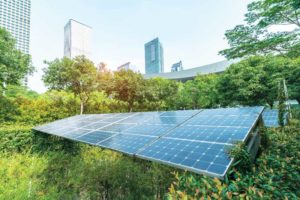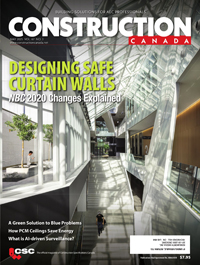Designing and delivering a greener future with sustainable buildings

Materials, methods, and models
It is helpful to view sustainable building development through three lenses: materials, methods, and models.
Materials
Sustainable materials, such as treated wood and smart glass, help reduce emissions throughout their life cycle. They require end-to-end strategic sourcing capabilities, including cost, quality, and supplier management. If their upfront cost is higher, the difference can be offset by a lower long-term life cycle cost, particularly for high-performance facades and energy-efficient systems. The costs of sustainable or low-carbon construction materials will likely gradually decline compared to conventional materials due to lower ingredient costs of recycled or by-product materials.
Methods
Sustainable methods, such as prefabrication, modular construction, 3D printing, advanced manufacturing, and generative design can dramatically reduce the waste life cycle of construction projects, further saving costs. These methods require effective supplier collaboration and development programs to manage cost and risk. These methods can also help reduce labour costs, ensure better design and quality control (QC), and shorten project schedules to help minimize budget overruns.6 Deloitte found that nearly half (46 per cent) of the respondents in its 2023 Engineering and Construction Industry Outlook will likely invest in prefabrication and modular construction capabilities next year.7
Models
Sustainable materials and methods frequently call for new commercial, organizational, and operational models. Sustainable models require oversight across procure-to-pay (PRP) processes and a high focus on spending compliance. A connected construction ecosystem can help by ensuring developers and operators have a continuous flow of data and information about all aspects of a project, including carbon reduction and cost. Returns can come instantly or over decades. For example, incorporating high energy efficiency in buildings helps save significantly on energy costs over a building’s lifetime.
Industry forces both impede and fuel progress
Even with a stronger focus through these lenses, getting to net-zero will likely be a formidable challenge. Environmentally conscious engineering and construction companies may face significant challenges as they endeavor toward serving customers and meeting climate goals.
Among the headwinds are rising material costs and interest rates, as well as labour shortages and supply chain constraints.8 Four in five engineering and construction organizations cite supply chain disruptions as one of the top three challenges in their companies.9 In addition, homebuilders will likely experience sluggish demand as real consumer spending is forecast to fall in 2023, amid an uncertain economic environment.10 Then there is the cost of money: In May 2023, the average rate on a 30-year fixed-rate mortgage was 6.39 per cent, which is more than double the pandemic rates.11
On the other hand, infrastructure projects are likely to remain relatively insulated from the economic slowdown, driven by strong infrastructure buildouts and the substantial project backlogs developers and contractors have in their pipeline.







